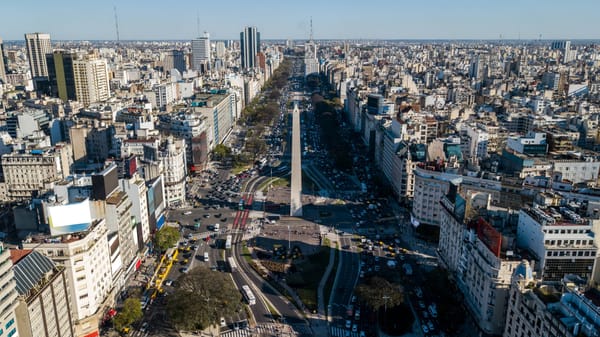Malaysia operates two distinct residency-by-investment programs that generated over RM455.8 million (US$102 million) in the first half of 2024 alone, positioning the country as a strategic middle-market player in Southeast Asia's competitive investment migration landscape. The flagship Malaysia My Second Home (MM2H) program, revamped in June 2024 with a new three-tier structure and mandatory property investment requirements, has attracted 782 new participants, while the newer Premium Visa Programme (PVIP) struggles with minimal uptake of just 47 approvals since its 2022 launch. Unlike Singapore's pathway to permanent residency or Thailand's flexible Elite Visa, Malaysia's programs offer long-term residence rights without direct citizenship routes, requiring careful consideration of the 10-year property lock-in periods and annual physical presence requirements of 60 days. The programs target different investor segments - MM2H appeals to retirees and families seeking affordable long-term Asian bases starting from USD 150,000, while PVIP aims at ultra-high-net-worth individuals with its USD 240,000 entry threshold plus USD 115,000 annual offshore income requirement.
The architecture of Malaysia's investment migration framework
Malaysia's approach to investment migration reflects a calculated strategy to capture different segments of the global wealth mobility market through two complementary programs. The MM2H program, operational since 2002 with nearly 60,000 approvals to date, underwent its most significant transformation in June 2024, introducing a sophisticated tiered system that replaced the previous one-size-fits-all approach. This restructuring demonstrates Malaysia's response to regional competition and changing investor preferences.
The Platinum tier requires a USD 1 million fixed deposit and RM 2 million property purchase, offering a 20-year renewable visa. The Gold tier demands USD 500,000 in deposits and RM 1 million in property for a 15-year visa, while the Silver tier provides entry at USD 150,000 deposits and RM 600,000 property investment for a 10-year visa. A special category for Special Economic Zones reduces entry thresholds to USD 65,000 for younger applicants, targeting digital nomads and remote workers in designated development areas like Forest City in Johor.
The PVIP program, despite its ambitious projections of attracting 20,000 participants and generating RM 206 million in revenue, has captured only 47 approvals generating RM 7 million - a stark 3% achievement rate. This underwhelming performance has prompted government reviews, with the Home Minister indicating possible program modifications. The PVIP's higher entry barriers and complex requirements appear misaligned with market demand, particularly when compared to Thailand's streamlined Elite Visa program.
Processing efficiency varies significantly between programs. MM2H applications now route through the Ministry of Tourism, Arts and Culture with a 30-day target processing time, though actual timelines stretch to 2-3 months. The approval rate stands at an encouraging 88%, with 1,905 approvals from 2,164 applications in 2023. PVIP processing remains considerably longer at 4-6 months, potentially contributing to its low uptake.
Financial architecture reveals strategic market positioning
Malaysia's investment requirements reflect careful calibration against regional competitors while maintaining accessibility for mid-tier investors. The mandatory fixed deposit system forms the program's financial backbone, with amounts held in Malaysian banks earning tax-free interest of approximately 3.0-3.8% annually. Participants can withdraw 50% after the first year for approved expenses including property purchases, children's education, or medical treatment.
The mandatory property investment represents the most significant policy shift in the 2024 reforms. All MM2H participants must now purchase residential property within minimum thresholds varying by tier, subject to a 10-year lock-in period. This requirement serves dual purposes - ensuring genuine economic contribution while supporting Malaysia's property market. State-level variations add complexity, with minimum foreign purchase thresholds ranging from RM 500,000 in Kedah to RM 2 million in Johor and Selangor.
Government fees structure transparently across tiers. Silver tier participants pay RM 41,000 total (RM 40,000 agent fees plus RM 1,000 participation fee), while Platinum tier reaches RM 270,000 (RM 70,000 agent fees plus RM 200,000 participation fee). These standardized fees prevent agent overcharging while ensuring service quality. Additional costs include mandatory medical insurance, visa renewal fees of RM 5,000 every 5-20 years depending on tier, and annual property taxes.
Tax implications favor foreign investors significantly. Malaysia exempts foreign-sourced income from taxation until December 2036, creating a favorable environment for international wealth management. Fixed deposit interest remains tax-free for MM2H holders, while only Malaysian-sourced income faces progressive taxation up to 30%. This positions Malaysia competitively against regional programs, particularly for retirees and passive income investors.
Benefits package balances attraction with sovereignty concerns
Malaysia's visa benefits reflect a conservative approach to long-term residency, prioritizing economic contribution over integration pathways. Both MM2H and PVIP offer multiple-entry visas valid for 5-20 years depending on tier, with straightforward renewal processes contingent on maintaining financial commitments. The programs include comprehensive family coverage - spouses, unmarried children under 35 (MM2H) or 21 (PVIP), and parents over 60.
The absence of direct permanent residency or citizenship pathways distinguishes Malaysia from competitors like Singapore, whose Global Investor Programme offers PR status with potential citizenship after two years. Malaysia's standard PR requirements demand 5 years continuous residence plus USD 2 million investment through separate application channels, with no preferential treatment for visa holders. Citizenship requires 10 years residence, Malay language proficiency, and renunciation of previous nationality - Malaysia prohibits dual citizenship.
Healthcare access operates on a two-tier system. While visa holders can access Malaysia's world-class private healthcare facilities, they pay full rates at public hospitals without subsidies available to citizens. Mandatory medical insurance requirements ensure participants can afford quality care, with private hospital consultation fees ranging from RM 30-250 and specialist visits at RM 150-400. Education rights mirror this structure - international schools welcome expatriate children at market rates, while public schools require foreign student fees.
Employment restrictions reveal program intentions clearly. MM2H participants cannot work or actively manage businesses, limiting them to passive investments. Only the Platinum tier permits employment, while PVIP includes full work rights. This delineation targets retirees and passive investors for MM2H while positioning PVIP for active entrepreneurs and professionals.
Southeast Asian competitive dynamics reshape program evolution
Malaysia's investment migration offerings occupy a calculated middle position in Southeast Asia's increasingly sophisticated residency market. Singapore's Global Investor Programme, requiring SGD 10 million (USD 7.8 million) minimum investment after a 2023 quadrupling of thresholds, targets ultra-high-net-worth individuals exclusively. With only 60 annual approvals, Singapore maintains exclusivity while offering genuine permanent residency and citizenship pathways.
Thailand's Elite Visa program demonstrates market accessibility at the opposite spectrum. Starting from THB 650,000 (USD 18,000) for 5 years with no investment requirements, the program has attracted over 58,000 active members generating THB 7 billion. Thailand's success stems from simplicity - no residency requirements, straightforward fee structure, and efficient processing. The recent addition of the Long-Term Resident visa for wealthy individuals and digital nomads further strengthens Thailand's position.
The Philippines' Special Resident Retiree's Visa offers remarkable value with USD 10,000-50,000 deposits providing indefinite stay rights. With 27,000 visas issued across 107 nationalities, the program demonstrates strong Asian market penetration particularly among Chinese (38%), Korean (27%), and Japanese (10%) retirees. Indonesia's 2023 Golden Visa launch at USD 350,000 for 5 years has already attracted 300+ permits and USD 123 million investment, suggesting strong initial momentum.
Vietnam's tiered DT visa system links investment amounts directly to visa duration, from USD 127,000 for 3 years to USD 4.25 million for 10 years. This business-focused approach targets active investors rather than retirees, complementing rather than competing with Malaysia's offerings.
Regional analysis reveals Malaysia's strategic positioning between Singapore's premium exclusivity and Thailand-Philippines accessibility. The MM2H program's combination of moderate investment thresholds, quality infrastructure, and English-language environment appeals to families and retirees seeking long-term Asian bases without Singapore's barriers or Thailand's limitations on property ownership.
Practical realities shape participant experiences
Living in Malaysia under Golden Visa programs involves navigating specific operational requirements that significantly impact daily life. The 60-day annual physical presence requirement, reduced from 90 days in December 2023, applies flexibly - participants under 50 can fulfill this through spouse or dependent presence. Immigration tracking occurs through passport stamps and the Malaysia Digital Arrival Card system, requiring online completion three days before arrival.
Banking relationships prove essential yet complex. While major banks including Maybank, CIMB, and Public Bank accept MM2H deposits, account opening requires physical presence, Malaysian address proof, and sometimes existing customer introductions. The mandatory fixed deposits cannot transfer between banks, creating lock-in effects. However, Malaysia's liberal foreign exchange policies permit currency accounts and unrestricted fund repatriation.
Property ownership rights extend only to residential real estate, with commercial property purchases prohibited. State-level minimum thresholds vary significantly, requiring careful market selection. The 10-year holding requirement prevents property flipping, ensuring genuine long-term commitment. Mortgage financing remains available from Malaysian banks, though terms vary by institution and applicant profile.
Healthcare navigation requires strategic planning. Private hospitals in Kuala Lumpur and Penang offer Joint Commission International accredited facilities with English-speaking staff, though costs approximate Western levels. Prince Court Medical Centre, Gleneagles, and Pantai Hospitals represent top-tier options. Public healthcare, while excellent, charges foreigners full rates - consultation fees reach RM 57 with specialist visits at RM 120, making private insurance essential.
Educational choices impact family budgets significantly. International schools following American, British, or International Baccalaureate curricula charge substantial fees beyond tuition including uniforms, textbooks, meals, and transport. Popular institutions like International School of Kuala Lumpur, Garden International School, and Alice Smith School maintain waiting lists, requiring early applications. Public schools remain accessible but require foreign student fees and operate primarily in Bahasa Malaysia.
Strategic implications for investment migration decisions
Malaysia's dual-program approach reveals sophisticated market segmentation attempting to capture diverse investor segments while maintaining program integrity. The MM2H reforms demonstrate responsiveness to changing demographics - lowering age requirements to 25 acknowledges younger wealth holders while mandatory property investment ensures tangible economic contribution. The PVIP's struggles highlight risks of overpricing in competitive markets where Thailand and Philippines offer simpler, cheaper alternatives.
For prospective participants, program selection requires careful needs assessment. Retirees seeking affordable long-term residence find MM2H Silver tier attractive at USD 150,000 entry, particularly given healthcare quality and English prevalence. Families prioritizing education might justify Gold or Platinum tiers for stability and international school access. Active investors requiring work rights must choose PVIP despite higher costs or consider alternative regional programs.
The absence of permanent residency pathways demands strategic consideration. Participants seeking eventual citizenship should evaluate Singapore's costlier but clearer trajectory or explore alternative routes through business investment or employment. Those content with renewable long-term residence find Malaysia's offerings compelling, particularly given tax advantages on foreign income and investment flexibility.
Regional competition will likely intensify program evolution. Thailand's success with simplicity and Indonesia's strong launch suggest market appetite for streamlined processes. Malaysia might consider reducing physical presence requirements, simplifying property purchase procedures, or creating clearer permanent residency pathways to maintain competitiveness. The PVIP program particularly needs fundamental restructuring given its 3% target achievement rate.
Conclusion
Malaysia's investment migration landscape reflects broader Southeast Asian trends toward sophisticated, tiered approaches targeting specific wealth segments. The MM2H program's 2024 transformation successfully modernizes a 20-year framework, introducing flexibility while maintaining program integrity through mandatory property investment. Early results - RM 455.8 million generated in six months - validate market demand at current price points.
However, strategic challenges remain. The PVIP's minimal uptake suggests misalignment with market preferences, while the absence of permanent residency pathways may deter investors seeking long-term security. As regional competition intensifies with Indonesia's entry and Thailand's continued success, Malaysia must balance revenue generation with program attractiveness.
For qualifying investors, Malaysia offers compelling value - quality infrastructure, English-language environment, strategic location, and favorable tax treatment create genuine lifestyle benefits. The mandatory property investment, while limiting liquidity, ensures participants contribute meaningfully to the economy. Success ultimately depends on matching program selection to individual objectives, whether seeking retirement havens, education bases, or regional business platforms.




